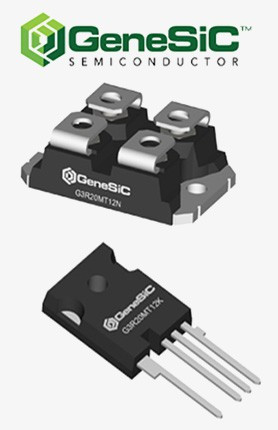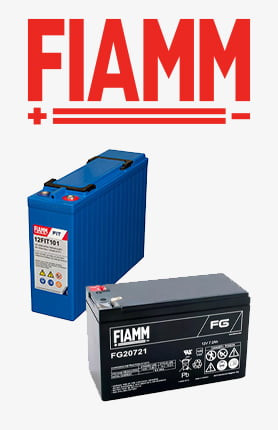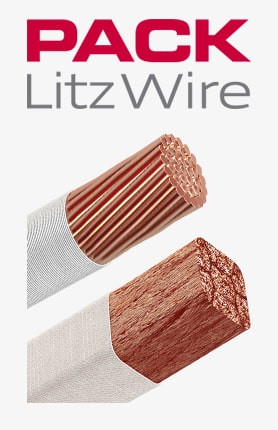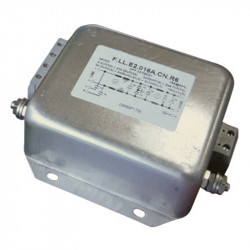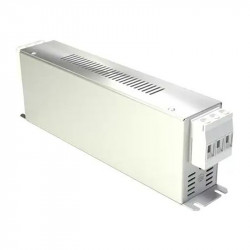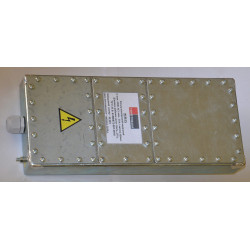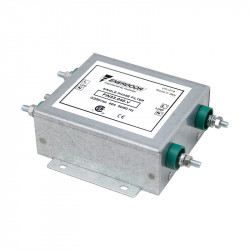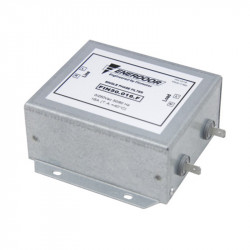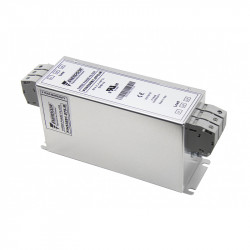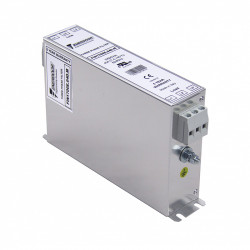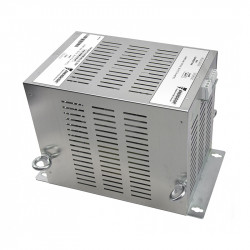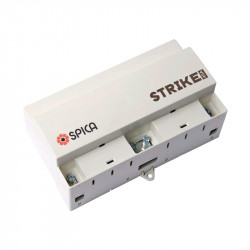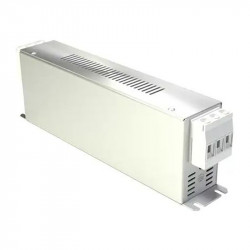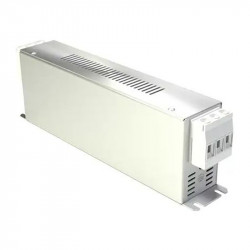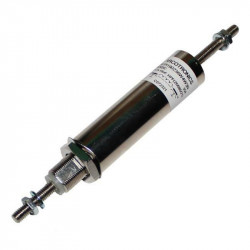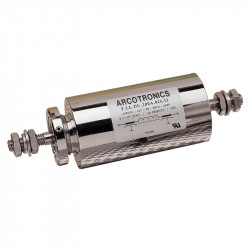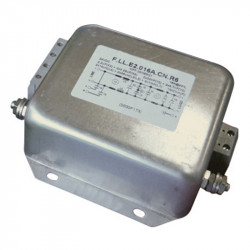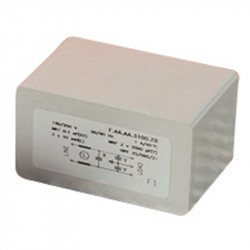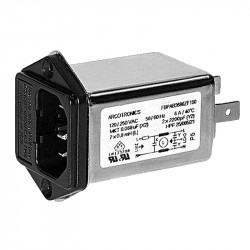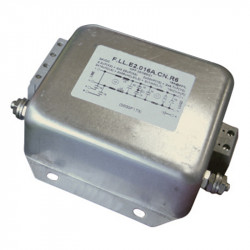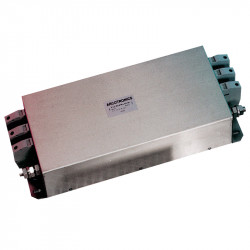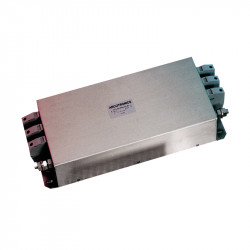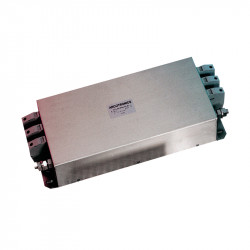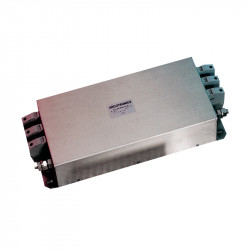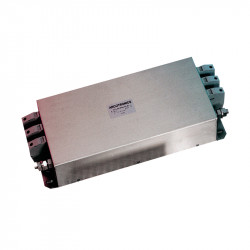EMI Filters
Categories
Electromagnetic interference is generated practically by all electronic devices whose operation is based on switching current at high frequency. The switching frequency ranges from several tens of Hz to several MHz. Higher current harmonics adversely affect other receivers connected to the same power supply network. They can cause excessive heating of power cables and transformers, overheating of capacitors in reactive power compensation banks, and malfunctioning of automatic circuit breakers. Propagation of interference up to 10 MHz occurs through conduction, and above 30 MHz through radiation. Between 10 MHz and 30 MHz, both methods of interference emission occur.
RFI Suppression Filters
To limit this undesirable phenomenon, RFI suppression filters (RFI filters) are used. Filters effectively suppress higher current harmonics in the frequency range of 100 Hz – 30 MHz. At signals above 10 MHz, the method of filter installation, type, and arrangement of cables significantly affect the filter's effectiveness. Filters are designed to work with devices such as inverters, switching power supplies, converters, medical equipment, and computers.
Network interference filters are manufactured for rated currents from 0.5 A to 1200 A, available in single-phase or three-phase versions. Three-phase filters are available in versions without a neutral conductor (L1, L2, L3 + PE) and with a neutral conductor (L1, L2, L3, N + PE).
Additionally, there are feedthrough filters used in military, medical, telecommunications devices, etc. These filters are recommended for systems with multiple inputs and outputs as they are cheaper than specialized multi-channel filters.
Technical parameters characterizing an interference suppression filter
- Insertion loss (attenuation) – this parameter defines the filtering effectiveness.
- Leakage current – a very important parameter describing RFI filters. This current appears due to the existence of parasitic capacitances and the capacitance CY between power conductors and the enclosure (protective earth conductor PE). The value of this parameter depends on the sum of the capacitances CY.
- Climatic category – defines the conditions in which devices can be operated. This parameter is specified according to DIN40040 or IEC68 standards.
- Current carrying capacity at operating temperature above 40ºC – the load current flowing through the filter depends on the ambient temperature. The rated current can flow through the filter at an ambient temperature of max. 40ºC. Beyond this temperature, the current flowing through the filter must be lower than the rated value and reaches zero at the maximum temperature defined by the climatic category (for filters generally 85ºC).
How does an EMI/RF interference suppression filter work?
EMI (Electromagnetic Interference) and RFI (Radio Frequency Interference) are types of disturbances that can negatively affect the proper functioning of electronic devices. Interference suppression filters eliminate this problem, thus improving the performance and stability of systems. They effectively reduce the occurrence of electromagnetic and radio frequency disturbances.
Network interference filters are intended for use in power supply networks. Their primary task is to protect installations from interference originating from the power supply source. Additionally, they effectively protect against noise generated by the devices themselves.
An EMI/RFI interference suppression filter works by damping high frequencies while allowing lower frequency signals to pass. They are usually built from a coil responsible for damping interference, a capacitor that drains or neutralizes it, and a ferrite core that increases their effectiveness.
RFI/EMI filters primarily operate based on the inductance phenomenon. Coils generate resistance that blocks the flow of electromagnetic noise while not negatively affecting the transmission of low-frequency current.
What effects do network interference suppression filters provide?
Interference suppression filters protect electronic devices from malfunction. They reduce disturbances that could affect their reliability and sometimes cause damage due to overload. Their application helps avoid costly failures. Additionally, interference suppression filters can significantly improve the quality of transmitted signals, especially in communication systems based on radio or telephone transmission.
Where are interference suppression filters most commonly used?
Network interference suppression filters are used in many electrically powered systems and devices. Among them are:
- power devices, such as power supplies, where they provide stable voltage and current by eliminating interference originating from the power grid,
- audio and video devices, where they improve image and sound quality by removing noise and properly shaping transmission bands,
- telecommunication devices, where they ensure better quality and stability of the signal without data transmission loss,
- industrial machines, where they guarantee high effectiveness of interference suppression even under heavy loads,
- measurement systems, where they ensure the accuracy of obtained measurement results by eliminating disturbances that could negatively affect their reliability.
Single-phase vs. three-phase interference suppression filters
RFI and EMI filters are available in the DACPOL offer in both single-phase and three-phase variants. The former are intended for use in 230 V power networks. This type of EMI/RFI interference suppression filter is equipped with two inputs for phase and neutral conductors. It effectively eliminates interference in low-power devices such as:
- household appliances/consumer electronics,
- medical equipment,
- computers,
- routers,
- controllers,
- control systems.
It protects them from interference originating both from the network and generated by switching power supplies or inverters.
Three-phase interference suppression filters are intended for operation in 400 V networks. They have three phase inputs and sometimes an additional fourth for the neutral conductor. Three-phase network RFI/EMI filters effectively suppress even intense interference over a wide frequency range. They are designed for industrial and infrastructure applications, including:
- motors,
- inverters,
- converters,
- electric vehicle charging stations,
- server rooms,
- switchboards,
- emergency power systems.

